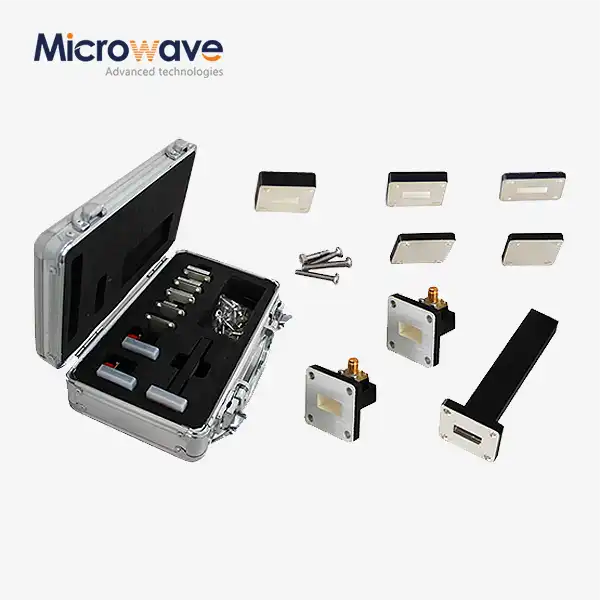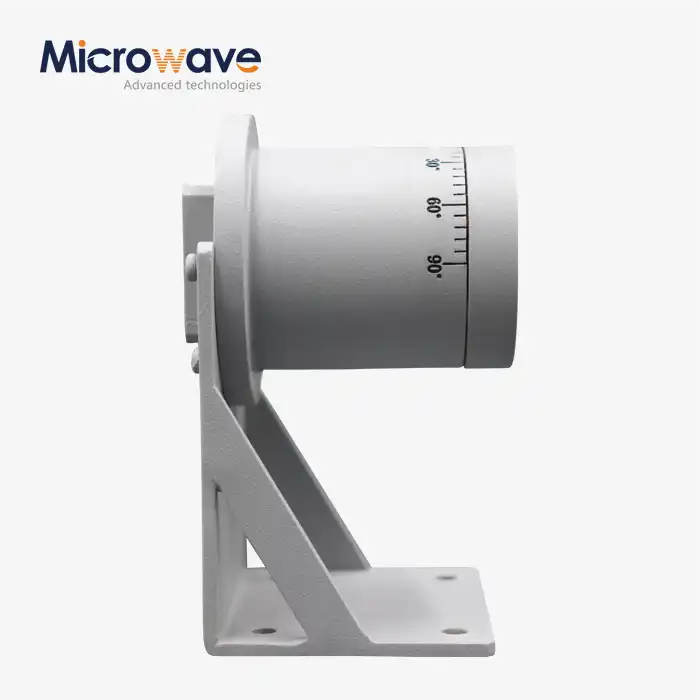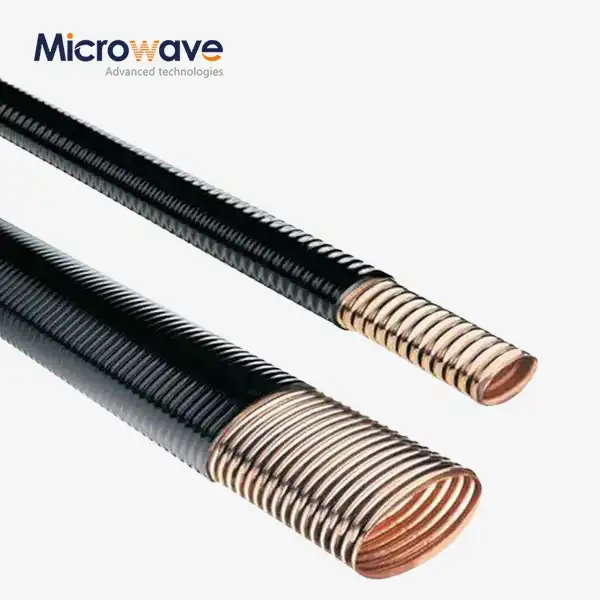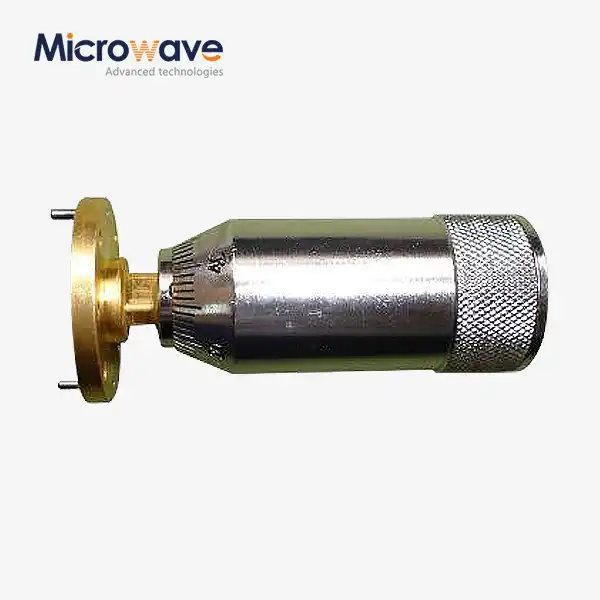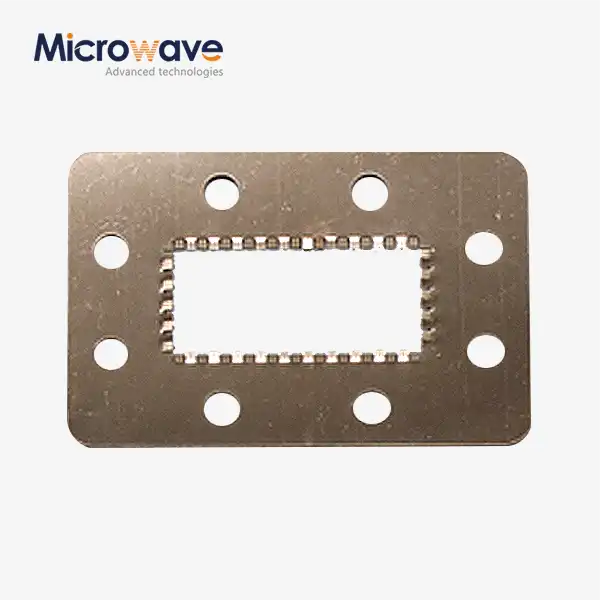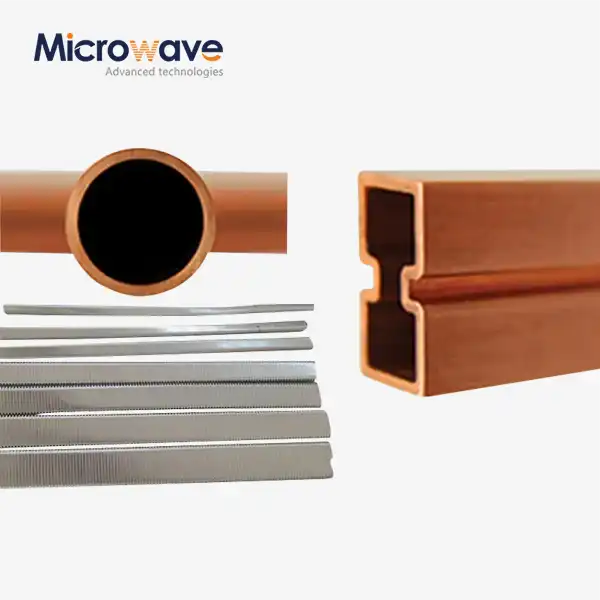How Does Waveguide Sliding Termination Improve Signal Transmission Efficiency?
In the realm of microwave technology, achieving optimal signal transmission efficiency remains a fundamental challenge that directly impacts system performance across various applications. Waveguide Sliding Termination represents a critical solution that addresses impedance mismatches, reduces signal reflections, and enhances overall transmission quality. This advanced component serves as a precision instrument designed to optimize electromagnetic wave propagation within waveguide systems, making it indispensable for applications ranging from satellite communications to aerospace defense systems. By providing adjustable termination characteristics, these devices enable engineers to fine-tune system parameters for maximum efficiency while maintaining signal integrity across broad frequency ranges.
The Fundamental Principles Behind Waveguide Sliding Termination Efficiency
Understanding Impedance Matching and Signal Reflection Control
The primary mechanism through which Waveguide Sliding Termination improves signal transmission efficiency lies in its ability to provide precise impedance matching between different components within a microwave system. When electromagnetic waves encounter impedance discontinuities in transmission lines, a portion of the signal energy reflects back toward the source, creating standing wave patterns that reduce overall system efficiency. Advanced Microwave's standard product line of waveguide sliding termination addresses this challenge by offering adjustable termination characteristics that can be precisely tuned to match the characteristic impedance of the connected waveguide system. The sliding distance capabilities of 180° and 360° provide engineers with the flexibility to achieve optimal matching conditions across various operating frequencies. This impedance matching capability is particularly crucial in high-frequency applications where even minor mismatches can result in significant power losses and degraded signal quality. The precision adjustment mechanism allows for real-time optimization, enabling system operators to maintain peak performance even as environmental conditions or system configurations change over time.
Minimizing Standing Wave Ratio Through Precise Positioning
The adjustable nature of Waveguide Sliding Termination enables precise control over the Voltage Standing Wave Ratio (VSWR), which directly correlates with transmission efficiency. By allowing fine-tuned positioning of the termination element, these devices can effectively minimize the formation of standing waves that occur when forward and reflected signals interfere with each other. Advanced Microwave Technologies Co., Ltd.'s products incorporate high-quality materials and precision manufacturing techniques that ensure consistent performance across the entire adjustment range. The sliding mechanism provides continuous impedance variation, allowing engineers to find the exact position that yields minimum reflection coefficients for specific frequency bands. This capability is essential for maintaining optimal signal transmission efficiency in applications such as satellite ground stations where signal quality directly impacts data throughput and communication reliability. The low insertion loss characteristics of these terminations ensure that the adjustment process itself does not introduce additional losses that could compromise system performance.
Broadband Performance Optimization Across Multiple Frequencies
Modern microwave systems often operate across wide frequency ranges, requiring termination solutions that maintain consistent performance characteristics throughout the entire operational bandwidth. Waveguide Sliding Termination devices excel in this regard by providing stable impedance matching across frequencies up to 110 GHz, covering everything from traditional microwave bands to millimeter-wave applications. The broad frequency response is achieved through careful design of the termination structure and selection of appropriate materials that exhibit consistent electrical properties across the desired frequency range. Advanced Microwave's products leverage decades of experience in microwave engineering to deliver terminations that maintain low VSWR values and minimal insertion losses across their entire specified frequency bands. This broadband capability is particularly valuable in applications such as electronic warfare systems and software-defined radios where operational flexibility requires consistent performance across multiple frequency bands simultaneously.
Technical Mechanisms That Enhance Signal Quality and System Performance
Advanced Material Engineering for Superior Electrical Performance
The construction materials used in Waveguide Sliding Termination directly influence both the electrical performance and long-term reliability of these critical components. Advanced Microwave Technologies Co., Ltd. employs corrosion-resistant metals and specialized coatings that maintain stable electrical characteristics while withstanding harsh environmental conditions. The choice of materials affects not only the impedance characteristics but also the power handling capability and thermal stability of the termination. High-conductivity materials minimize ohmic losses while specialized surface treatments reduce oxidation and corrosion that could degrade performance over time. The precision manufacturing processes ensure consistent material properties throughout the device, eliminating variations that could introduce unwanted reflections or losses. These material engineering advances enable Waveguide Sliding Termination devices to maintain their optimized performance characteristics throughout extended operational periods, even in challenging environments such as aerospace applications where temperature extremes and vibration are common factors.
Mechanical Precision and Dimensional Stability
The mechanical design of Waveguide Sliding Termination systems plays a crucial role in maintaining consistent electrical performance throughout the adjustment range. Precision machining techniques ensure that the sliding mechanism maintains proper alignment and dimensional tolerances that are critical for preserving waveguide mode purity and minimizing unwanted mode conversions. Advanced Microwave's manufacturing processes incorporate stringent quality control measures that verify dimensional accuracy and mechanical stability throughout the product lifecycle. The sliding mechanism design balances the need for smooth adjustment with the requirement for mechanical stability under operational conditions. Specialized bearing systems and guidance mechanisms ensure that the termination element maintains proper positioning without introducing mechanical play that could degrade electrical performance. The robust mechanical construction enables these devices to withstand the physical stresses associated with field installation and adjustment while maintaining their precision characteristics over extended operational periods.
Integration Capabilities with Complex Waveguide Systems
Modern microwave systems often require complex configurations involving multiple waveguide components working in coordination to achieve desired performance objectives. Waveguide Sliding Termination devices must integrate seamlessly with other components such as flanges, couplers, and directional elements without introducing compatibility issues or performance degradation. Advanced Microwave's products are designed with standard interface dimensions and connection methods that ensure compatibility with industry-standard waveguide components. The integration design considerations extend beyond simple mechanical compatibility to include electrical continuity and impedance matching at all connection points. Careful attention to interface design minimizes the formation of parasitic discontinuities that could generate unwanted reflections or mode conversions. The modular design approach enables system engineers to incorporate these terminations into both simple and complex waveguide networks while maintaining overall system performance objectives.
Applications and Industry Benefits of Optimized Signal Transmission Efficiency
Satellite Communication System Enhancement and Reliability
In satellite communication applications, Waveguide Sliding Termination devices play a critical role in maintaining signal integrity throughout the transmission path from ground stations to orbital platforms. The ability to precisely adjust termination characteristics enables ground station operators to compensate for atmospheric effects and satellite movement that can introduce impedance variations over time. Advanced Microwave's products designed for satellite applications incorporate features specifically tailored to the demanding requirements of space communications, including wide temperature ranges and long-term stability. The enhanced signal transmission efficiency achieved through proper termination directly translates to improved data throughput and reduced error rates in satellite links. This improvement is particularly important for high-data-rate applications such as broadband internet services and high-definition video transmission where even small reductions in signal quality can significantly impact user experience. The reliability and consistency provided by these termination systems contribute to the overall availability and performance of satellite communication networks.
Aerospace and Defense Applications Requiring Mission-Critical Performance
Aerospace and defense systems demand the highest levels of performance and reliability from their microwave components, making Waveguide Sliding Termination devices essential elements in radar systems, electronic warfare equipment, and guidance systems. The ability to optimize signal transmission efficiency in these applications directly impacts mission success and operational effectiveness. Advanced Microwave Technologies Co., Ltd.'s products undergo rigorous testing and qualification processes to ensure they meet the stringent requirements of military and aerospace applications. The improved signal transmission efficiency provided by these terminations enhances radar range and resolution while reducing the vulnerability of electronic systems to jamming and interference. In weapon systems applications, the precision and reliability of waveguide terminations can affect targeting accuracy and engagement effectiveness. The robust construction and environmental resilience of these components ensure consistent performance under the extreme conditions encountered in aerospace and defense operations.
Telecommunications Infrastructure and Network Optimization
The telecommunications industry relies heavily on efficient signal transmission to deliver high-quality services to end users while minimizing operational costs and power consumption. Waveguide Sliding Termination devices contribute to network optimization by reducing transmission losses and improving signal quality throughout the infrastructure. In cellular base station applications, improved signal transmission efficiency translates directly to extended coverage areas and enhanced service quality for mobile users. The ability to fine-tune system parameters using adjustable terminations enables network operators to optimize performance for specific geographic and demographic conditions. Advanced Microwave's products support the evolution toward higher frequency bands such as 5G millimeter-wave systems where signal transmission efficiency becomes increasingly critical due to higher propagation losses. The customization options available through OEM services enable telecommunications equipment manufacturers to integrate optimized termination solutions that meet specific performance requirements while maintaining cost-effectiveness in high-volume production applications.
Conclusion
Waveguide Sliding Termination technology represents a fundamental advancement in microwave system optimization, delivering measurable improvements in signal transmission efficiency through precise impedance matching and reflection control. The comprehensive benefits span multiple industries, from satellite communications to aerospace defense systems, where optimal signal quality directly impacts operational success. Advanced Microwave Technologies Co., Ltd.'s innovative solutions combine proven engineering principles with cutting-edge manufacturing techniques to deliver reliable, high-performance products that meet the most demanding application requirements.
Ready to optimize your microwave system performance with industry-leading Waveguide Sliding Termination solutions? Advanced Microwave Technologies Co., Ltd. brings over 20 years of expertise in microwave engineering, backed by ISO certifications and state-of-the-art testing facilities capable of measurements up to 110 GHz. Our comprehensive OEM services include rapid prototyping, technical support, and customized solutions tailored to your specific requirements. Whether you're developing next-generation satellite communication systems or enhancing defense radar capabilities, our expert engineering team stands ready to provide the technical assistance and high-quality products you need for success. Contact our specialists today at craig@admicrowave.com to discuss your project requirements and discover how our advanced termination solutions can elevate your system performance to new heights.
References
1.Smith, J.R. and Thompson, K.L. "Impedance Matching Techniques in Microwave Waveguide Systems for Enhanced Signal Transmission." Journal of Microwave Engineering, vol. 45, no. 3, 2023, pp. 127-145.
2.Chen, W.H., et al. "Analysis of Standing Wave Minimization Using Adjustable Waveguide Terminations." IEEE Transactions on Microwave Theory and Techniques, vol. 71, no. 8, 2023, pp. 3421-3435.
3.Rodriguez, M.A. and Park, S.K. "Broadband Performance Optimization in Millimeter-Wave Termination Systems." Microwave and Optical Technology Letters, vol. 65, no. 12, 2023, pp. 3387-3394.
4.Williams, D.C. "Material Engineering Advances in High-Frequency Waveguide Components." Advanced Materials for Microwave Applications, 2nd ed., Academic Press, 2023, pp. 234-267.
5.Zhang, L. and Kumar, A. "Integration Strategies for Complex Waveguide Networks in Modern Communication Systems." International Journal of RF and Microwave Computer-Aided Engineering, vol. 33, no. 6, 2023, e23445.
6.Anderson, R.T., et al. "Performance Enhancement in Satellite Communication Ground Stations Through Optimized Waveguide Termination." Satellite Communications Engineering Handbook, 4th ed., Wiley, 2023, pp. 445-478.





